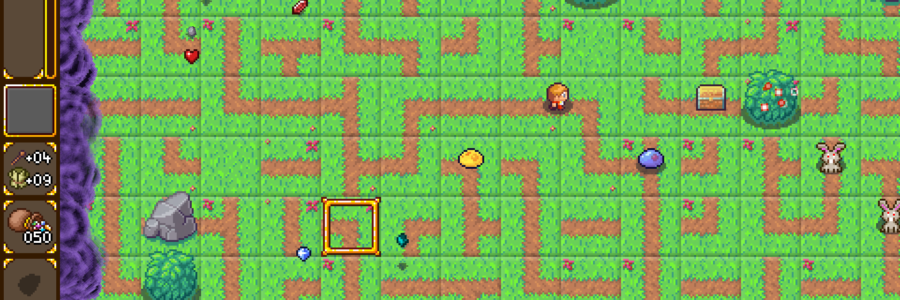When SwapQuest launched on PlayStation Vita last year, we knew this would only be the beginning, as we wanted to bring it to the big screen to unleash the game’s full potential. But just porting SwapQuest over wasn’t what we had in mind. Even though it’s a pretty old-school 2D-experience, we wanted to use some of the power the PlayStation 4 and the Xbox One offer to enhance the experience. The results may be subtle in places, but hopefully noticeable, so let’s get to it.
The first big enhancement, which required changing almost every piece of code in the game, was upping the framerate from 30 to 60 frames per second, which makes the movement in the game much more fluid. It doesn’t make the animations any smoother, but the way every object moves is a lot more pleasant to the eye.
After that was out of the way, I started working on something much more fun and meaningful for the game: the coop mode. Having grown up with consoles, couch coop (or “not so coop”) was always a huge deal to me and my friends. At first, I thought “just adding a second player is easy”. I was so wrong. But after a second round of reworking the entire code (with a period of six weeks in which I wasn’t even able to test the game as everything was broken), it finally came together. And it’s such a good fit!
Playing with a friend really gives a new dimension to the game, especially as both players can choose different character classes that complement each other. And as with most coop experiences, you are not limited to helping each other, you could also grab the path tiles that the other player is desperately looking for or spend all your hard-earned jewels in the store before your coop partner is able to. But who would do that, right?
One last thing about the coop mode I’d like to mention is that this also affects the single player in a fun way. If player one should ever be stuck in a level, player two can grab the second controller and hit any button, which then initializes the “Guest Mode”. This creates a temporary second player to help you out. This player doesn’t get saved for later sessions, but plays and develops just as the normal player.
Another graphical enhancement the console version got is what I dubbed the “Smooth Asset” mode. It takes all the pixel art graphics in the game and – through some magic and mostly math – transforms them so that they look a lot smoother and more high-res. It’s totally optional and was meant as an alternative for all those people that don’t love pixel art as much as I do. For extra comfort, the player can switch between those two styles anytime with a press on the R3 button.
All these more technical improvements aside there is also some new content for those looking for an extra challenge: remix bosses. After the PlayStation Vita release I got a lot of positive feedback from people saying that they loved the boss fights, so I decided to add alternate versions of the normal bosses to the end game. They are a lot harder, have all new attacks and you must beat them before the timer runs out. But remember: you can always invite a friend over and try it together!
I really hope everyone looking for a slightly different rpg experience is going to have fun with SwapQuest. It took over a year to complete the console version, which included many rewrites of the game code and countless hours of testing, but I feel it was worth it. I can safely say that the console version of SwapQuest is the definitive version of the game and especially with the added coop mode I hope it earns its place on this wonderful hardware.



